Understanding Marijuana
Learn About Marijuana
Marijuana, which consists of leaves, stems, and flowers of the cannabis sativa plant, is one of the most frequently abused drugs in the United States. The drug is commonly ingested by being smoked, added to food and eaten, or brewed into a tea. The principal psychoactive component of marijuana is THC, which is short for delta-9-tetrahydrocannabinol. THC interacts with several parts of the brain, including the hippocampus, which is associated with the creation of memories, and the amygdala, which is linked to emotional learning.
The short-term effects of marijuana abuse include mild to moderate analgesia, stimulated appetite, impaired memory, enhanced relaxation, and distorted perceptions of time and space. Multiple studies suggest that chronic and/or heavy marijuana abuse may lead to irreversible structural changes in the brain, including decreases in the volume of the hippocampus and amygdala.
Though many people hold the mistaken belief that marijuana is a harmless substance, the truth is that abusing this drug can lead to significant negative outcomes. Thankfully, substance abuse treatment centers have developed effective programming that can help people regain control over their behaviors, overcome the compulsion to abuse marijuana, and resume their pursuit of a healthy drug-free future.
Statistics
Marijuana Statistics
Surveys indicate that about 25 million people in the United States have abused marijuana at least once in the past year, and that about 100 million Americans have abused this drug at least one time in their lives. Globally, information provided by the United Nations indicates that about 3.5% of the world’s population (or about 155 million people) engage in marijuana abuse every year.
In the first decade of the 21st century, nearly seven million Americans were arrested for violating laws related to the use, possession, or sale of marijuana. The Drug Abuse Warning Network (DAWN) reports that in 2011 alone, marijuana abuse contributed to more than than 450,000 visits to emergency rooms.
Causes and Risk Factors
Causes and Risk Factors for Marijuana Addiction
Several genetic and environmental influences may determine a person’s risk of abusing or becoming dependent upon marijuana.
Genetic: Having a parent or sibling who has or had a substance use disorder increases the likelihood that a person will also develop a substance use disorder, as does having a family history of mental illness. As advances in technology have provided researchers with greater insights into human genetics, more than 250 genes, acting alone or in clusters, have been identified as possibly having an influence over whether or not a person will be predisposed to developing a substance use disorder.
Environmental: Growing up in a family where the abuse of marijuana and/or other drugs was commonplace can be not just a genetic risk factor but also an environmental influence on a person’s chance of developing a substance use disorder. Other environmental influences that can raise a person’s likelihood of abusing marijuana include living in poverty, having chronic exposure to stress, experiencing trauma, and associating with friends or colleagues who abuse drugs.
Risk Factors:
- Age (most people who abuse marijuana first do so before age 30)
- Personal or family history of substance abuse
- Personal or family history of mental illness
- Personal history of trauma
- Poor stress-management capabilities
- Early exposure to substance abuse
Signs and Symptoms
Signs and Symptoms of Marijuana Addiction
The following are among the many symptoms that may indicate that a person is engaging in marijuana abuse:
Behavioral symptoms:
- Possessing rolling papers, roach clips, and other drug paraphernalia
- Neglecting one’s appearance and personal hygiene
- Acting secretively or deceptively regarding one’s activities and/or whereabouts
- Pattern of unexplained absences from work or school
- Declining performance at work or in school
- Engaging in eating binges
- Engaging in risky, reckless, or otherwise dangerous behaviors
Physical symptoms:
- Problems with balance and coordination
- Impaired motor skills
- Delayed reaction time
- Increased appetite and resultant weight gain
- Lethargy
- Hypersomnia
- Dry mouth
- Bloodshot and/or glassy eyes
Cognitive symptoms:
- Poor decision-making skills
- Problems forming or recalling memories
- Impaired concentration
- Difficulty tracking the passage of time
- Impaired sensory perception
Psychosocial symptoms:
- Agitation and irritability
- Fear, panic, and/or paranoia
- Social withdrawal and isolation
Effects
Effects of Marijuana Abuse
Chronic marijuana abuse can increase a person’s risk for experiencing a wide range of short- and long-term damage, including the following:
- Respiratory infections and lung damage
- Heart problems
- Abuse of alcohol and other substances
- Impaired capacity for learning
- Academic failure
- Job loss and unemployment
- Sexual dysfunction
- Legal problems, including potential incarceration
- Financial trouble
- Family discord
- Damaged or destroyed interpersonal relationships
Co-Occurring Disorders
Marijuana Addiction and Co-Occurring Disorders
Many individuals who abuse marijuana are also struggling with co-occurring mental health disorders such as the following:
- Anxiety disorders
- Bipolar disorder
- Major depressive disorder
- Persistent depressive disorder
- Attention-deficit/hyperactivity disorder (ADHD)
- Post-traumatic stress disorder (PTSD)
Withdrawal
Effects of Withdrawal
Sudden cessation of use after a person’s body has become dependent upon marijuana can bring about several unpleasant withdrawal symptoms, including the following:
- Powerful cravings for marijuana
- Agitation
- Irritability
- Depression
- Dizziness
- Concentration problems
- Impotence
- Insomnia
- Loss of appetite






